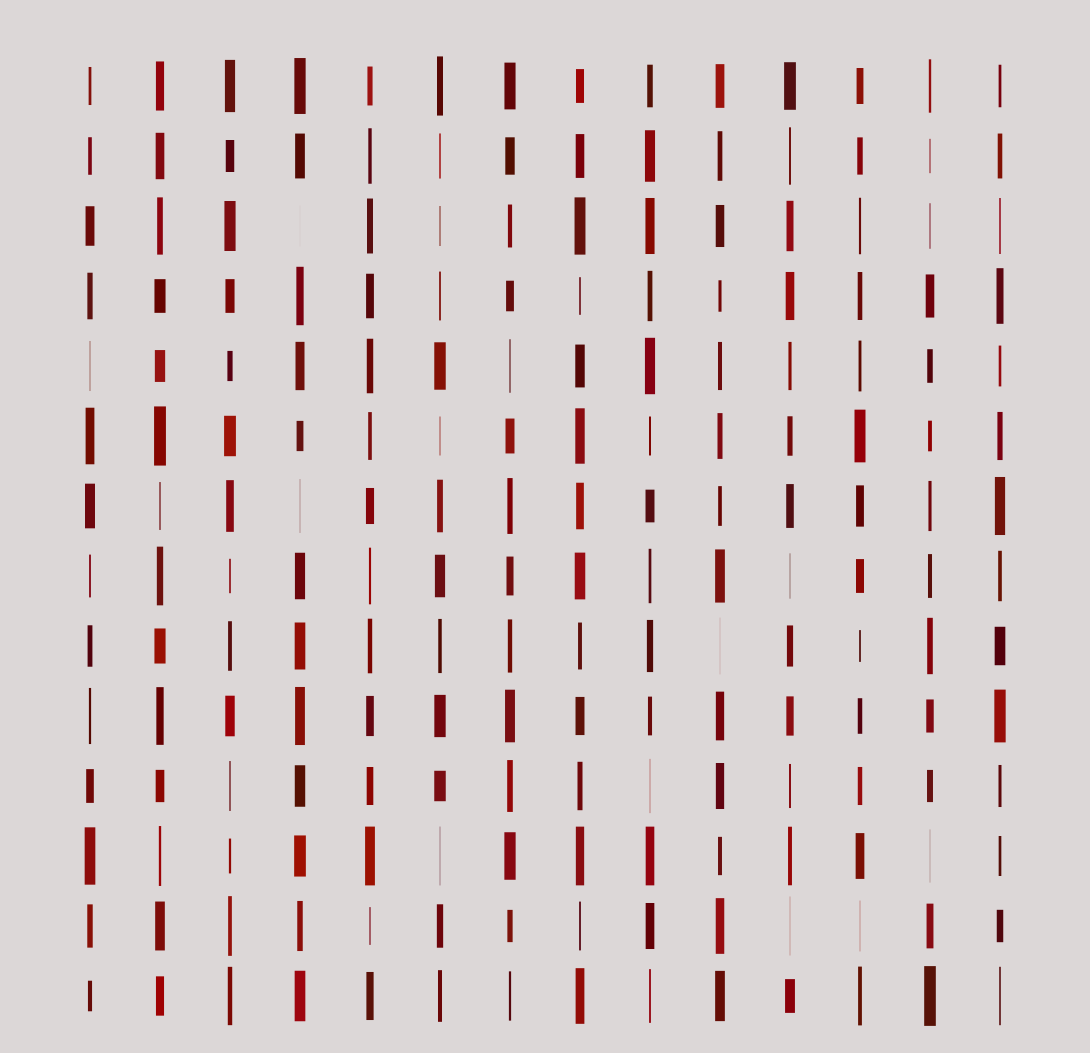
One of Grace Hertlein’s signature aspects of her work is her tendency to have an organic look, almost as if the work was created with traditional art materials. This was my main focus in creating my reflection on her work. In this first work, I drew inspiration from her soft organic style to create a figure with lines that seem to fade in and out with transparency. The completed form of this work is in the active mode, and what’s missing from the static image is that the figure continues to draw over itself in a circular manner. However, it’s not a mechanical movement of the same strokes being made over each other. Because of the noise introduced to the image, the animated finished work seems as though it’s being continually hand-drawn. I personally am drawn to this style of work more than other artists we have studied, such as Georg Nees and Vera Molnar, because of the organic forms.
Another piece of Grace Hertlein’s work is the relation it has with nature. Hertlein often focuses on landscapes, but instead of having an exact replica of a real life landscape, she has a way of creating different elements in code with noise and soft lines to create one cohesive landscape piece. Not only does she draw inspiration for her work from landscapes, but any aspects of nature. I have chosen to go this route with my work, producing two variations of code that have been influenced by the recent cold weather.

I have made two renditions of this code to showcase the difference changing the color of the background and figure can make. In the first version, I have a blue frost on a white background. In the second version, I have a white snowflake on a blue background. Although similar, just the slightest of modifications can change the story the work is telling. I originally had very bright colors in this work, a bright star on a striking red background. I eventually chose to go with a more organic color palette. I believe using more organic colors can enhance the likeness the figures have to their real-life inspiration. Hertlein also tends to use more colors inspired from nature, or simply black, white, and grays.
In the next work, I played with the idea of doing a landscape. However, while working through the code, an entirely different point of view came to the surface.

I created this field with the perspective of looking up into the sky from tall grass in mind. Although not directly in the work, I could almost image a field mouse looking up and viewing the grass as these tall upward structures with the sky far above from anyone’s reach. Although it’s not what is traditionally considered a landscape, it is still representative art of nature, and in that way in falls in alignment with Hertlein’s work of landscapes. However, this form is not as organic as a real view of grass. What I have come to appreciate about computer art is that in working with this style of organic art, code is able to create scenes that would be difficult to replicate in the natural world. It would be difficult to photograph such precise placement of grass, but with code, the placement is entirely up to the artist. In this way, it’s not a truly organic form of art, but the imitation process is extremely engaging. For example, with this work of a field, I was able to implement randomness in the color of the grass and choose the shades that appear in the final work. Modifying the code to achieve the exact look the artist is trying to create is an ability not found in other art forms. While in traditional art, it’s difficult to completely change the color of the elements in the work once it’s already completed. In coding, simply altering a few lines of code can completely rework the art.
By revising the color choices in the code for the first field, I was able to create a new image. This image, although working with a somewhat inorganic color palette, still is representative art of a field. With the change of color, the mood of the work changes, it looks as though it could be a field during sunset. If this was done in a traditional art form, I would have to create an entirely new piece and the lines would not be exactly the same as the previous field. This is a true advantage of code, in which artists can utilize to rework their art without needing to completely start anew.



